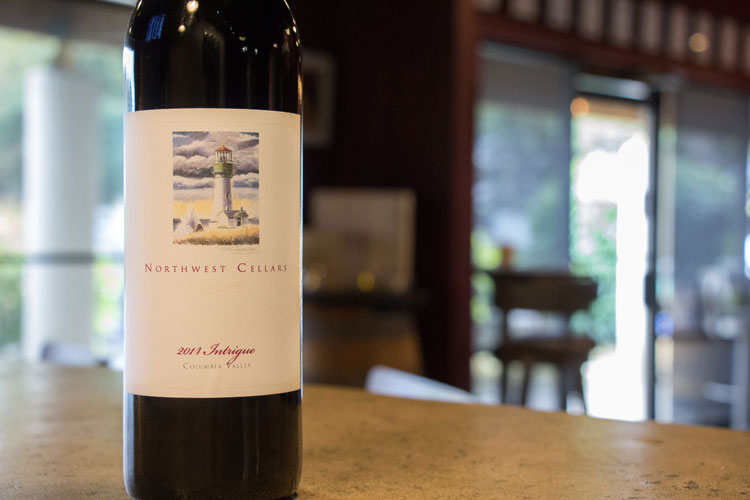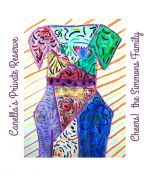

SHOULD I LET MY WINE AGE?
To people who ask how long they should hold a wine, Bob frequently says “If you like the way the wine tastes now, drink it within 2 years.” Sound advice, I think. For cellaring wine is a personal and imprecise business. And, while I think we at Northwest Cellars “will sell no wine before its time” (thank you, Orson Welles), there are many considerations to this question.
WHY DO WE AGE WINES?
First off, why do we age wines? Because, with time, wine evolves and develops. It can change in color, nose, and taste from when it is initially bottled developing more complexity and nuance. It is this transformation for which we wait.
WHAT MAKES A WINE AGE WORTHY?
Secondly, what do we look for in a wine to make it age worthy? The traits to look for are high acidity, tannin structure, low alcohol levels and residual sugar. High acidity because as a wine ages it slowly loses its acids and will end up tasting flat. So start high and go long. Tannins are a big structural component. Red wine with higher tannins will tend to age better than a low tannin red. The tannins will smooth out over time. But if a wine is not balanced with its other components to begin with, it will not improve with age. Witness well balanced, long lived whites that survive nicely without tannins. Surprisingly, lower alcohol will also enable a wine to last longer. Alcohol is volatile in non fortified wines and causes it to turn to vinegar more quickly. Generally the lower the alcohol, the longer the wine will last. Note there are exceptions to this rule. While alcohol may ruin normal still wines, fortified wines with alcohol levels of 17% – 20% are some of the longest lived wines of all. Residual sugar is often overlooked as a wine preservative because of the popularity of aging dry wines. But, like fortified wines, Port, Sherry, Sauternes, and Rieslings are also some of the longest lived wines out there.
WINES THAT DON’T NEED TO BE AGED
But not all wines need or should be aged. A light bodied crisp white wine with a flowery nose like, say, an Italian Pinot Grigio, will not be made better by aging. Indeed, it’s fruit will fade, aromas will dissipate, and it will be bereft of all its original charm. Most whites and rosés fall into this category. However, you can keep a more full bodied white like an oaked Chardonnay or Rousanne a little longer, say 3-7 years. And fine whites from Burgundy, the French Chardonnays, can be kept for ten years or more.
Like the fresh whites and rosés, many lighter bodied reds don’t need long cellaring. You don’t want to miss the fragrant nose and cherry flavors of a new world Pinot Noir by letting it languish a little too long, do you? I bet not.
WHY MODERN WINES ARE DIFFERENT
Also, let me just say that modern wines, in general, need much less aging than wines of yore. And new world wines in general are meant to be enjoyed at a younger age. Many old world reds will hold longer because they are generally drier and have more tannins. The tannins will mellow in full bodied reds and the wine will become more balanced over time.
And there’s this about modern wines: green harvesting. This is the vineyard practice of removing less ripe clusters of grapes from the vine about a month before the actual harvest. This creates grapes of more uniform ripeness. Uniformly ripe grapes create softer, rounder, finer tannins, which, in turn, create wines of more uniform quality so they will become more balanced more quickly. And, if there’s anything we Americans like, it’s more of everything!
AGING MODERN WINES
Can these wines age as long? Probably. But, they don’t NEED to. The wine simply transforms more quickly nowadays. Not many require aging more than 5-10 years. Other factors that contribute to the more rapid readiness are today’s cleaner winemaking methods. Simple hygiene has made a huge difference in itself. Temperature control, fermentation methods, careful filtering and many other winemaking and cellaring techniques also play a role.
But, but…what about the famous red Bordeaux? Or red Burgundy? Or grand cru Chablis or Barolo??? Alright, these and others, like German and Alsatian Rieslings, Napa Cabernets, and Hungarian Tokajis still reward aging. But modern versions of even these wines don’t require anywhere near as much aging as there forbears.
To quote Matt Kramer from Wine Spectator, “…most of today’s fine wines – not all, mind you – will reach a point of diminishing returns on aging after as few as five years of additional cellaring after release. Stretch that to a full 10 years of additional aging and I dare say you will have embraced fully 99% of all the worlds wines, never mind how renowned or expensive.”
You may take or leave his assertion, but there you go. And, I must tell you, I have read others like it. Also note that, unlike many local wineries, Northwest Cellars’ reds are mostly 2014’s with a few ’15’s. They are already four and five years old. What did I tell you?
DOES COST PLAY A ROLE IN AGING?
So, is cost a factor? Maybe. A $20 bottle is generally crafted to be drunk sooner than a $60 or $120 bottle. Let’s hope anyway! And remember, as my Dad, Mikey, used to say, Peg, there’s always a deal out there. Get your wine steward to give up their secrets!
CORKS VS. SCREWCAPS: THE GREAT DEBATE
One other thing I’d like to bring up is the cork versus screwcap question. This is getting to be a serious and controversial conversation in the world of wine. The traditional thinking goes like this: While a screwcap can be used on very good wines, these wines are designed to be drunk on the younger side. Cork, on the other hand, is better equipped for aging because it is never completely hermetic allowing a minute amount of oxygen to enter the bottle which helps wine to evolve and mature. But guess what? Now, I have read about studies using screwcaps for long term aging (15-20 years) and the effect they have on wine. They age, but much more slowly. Many oenophiles prefer screw caps because the wine stays fresher, cannot get cork taint (see my column called Not my fault!) and cannot get over oxidized. And, here was a surprise to me, there’s a company that now offers some permeability in the plastic liners of their screwcaps that works like a traditional cork. In fact, they offer four levels of oxygen transmission rates. They also don’t degrade or dry out over time. You could store bottles upright!
So will screwcaps take over? I don’t know. Cork is a renewable resource. It is biodegradable. Screwcaps are not recyclable due to that plastic liner and they are made from aluminum which takes a lot of energy to produce. Though the Australians love them, they still cork some of their finer wines intended for export with corks for those who still equate screwcap with cheap. So I’m a bit on the fence. I think I’m more of a traditionalist. And a sensualist. Will a screwcap ever compete with the romance, drama and suspense of a cork being pulled from a bottle over a candlelit dinner? And that resounding “pop?”
Oh…I think not.
Cheers for now!
~ Peggy












0 Comments